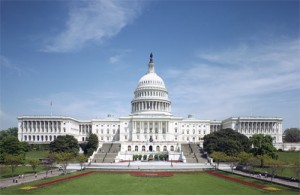I recently wrote http://leonardsipes.com/social-media-during-emergencies-are-you-ready-for-an-explosion-of-bad-information/ which addressed the potential for hundreds of thousands of social media posts during an emergency. This is not my first article on the subject and I have personally administered the public affairs response to scores of major incidents.
Please let me make one thing clear from the beginning; I love social media and I believe that the future of communications is social. I believe that social media will be an integral part of the next major emergency in the US and we need to know how to handle it.
There are five major points to consider:
The emergency scenario I envision is a multi-day event rapidly taking place in multiple places (think Katrina or coordinated acts of terrorism).
Emergency public affairs responders will be taxed to the limit as to keeping up with “mainstream” media and getting the word out to the public.
Processing hundreds of thousands of social media comments is simply beyond the abilities of any organization.
It’s inevitable that there will be thousands of misinformed or malicious posts.
Government and nonprofit public affairs response capabilities are being cut, not expanded.
Comments from the previous article–four threads:
There were approximately 25 responses to the article in a variety of forums but principally in LinkedIn, e-mail and this site.
First: Some suggested that social media automatically corrects bad information based on reports from mainstream media. Well, that assumes that mainstream media is monitoring social media and setting the record straight.
For those not in the business let me assure you that news rooms have undergone a cut of 30 percent and more during the last ten years. Like government and nonprofits, they are doing more with less.
There is now new research from Pew that media do not read and respond to their own posts through social media. Essentially, for the media, it’s a one-way form of communication.
Second: Others agree with me that it’s a major problem in search of a solution.
Third: Some took me to task (very nicely) about the public affairs community’s reluctance to engage in social media which may have some validity “but” it’s not due to indifference, it’s due to staffing.
Fourth: Still others feel that the social media community will be a plus and my concerns are greatly overblown. So that assumes that everyone with a Facebook account has everyone’s best interest in mind? No people with mental illness, no sex offenders, no one engaged in fraud? Please!
Solutions:
The best solution came from one commenter who suggested that FEMA or a corporate entity create a social media response structure solely dedicated to analyzing social media traffic, distilling the basic messages (i.e., thousands are urging people in Happy Valley to flee because of an impending dam break) and getting the information to the public affairs team so they can correct misinformation or confirm good information. If done by a corporation, then obviously states and local entities will pay a free to belong.
Does anyone believe that in this day and age of 5-10 percent budget cuts that FEMA will ever develop this capacity? Obviously not. FEMA would need to administer the process on the behalf of all of us, but it simply will never have the funds necessary to staff hundreds of tech and social media savvy people in one place and administer the communications process.
Conclusion:
Social media “will” be a major ingredient during the next major emergency. We are “not” prepared for the consequences. Any other good suggestions?
Best, Len.





Leave a Reply
You must be logged in to post a comment.